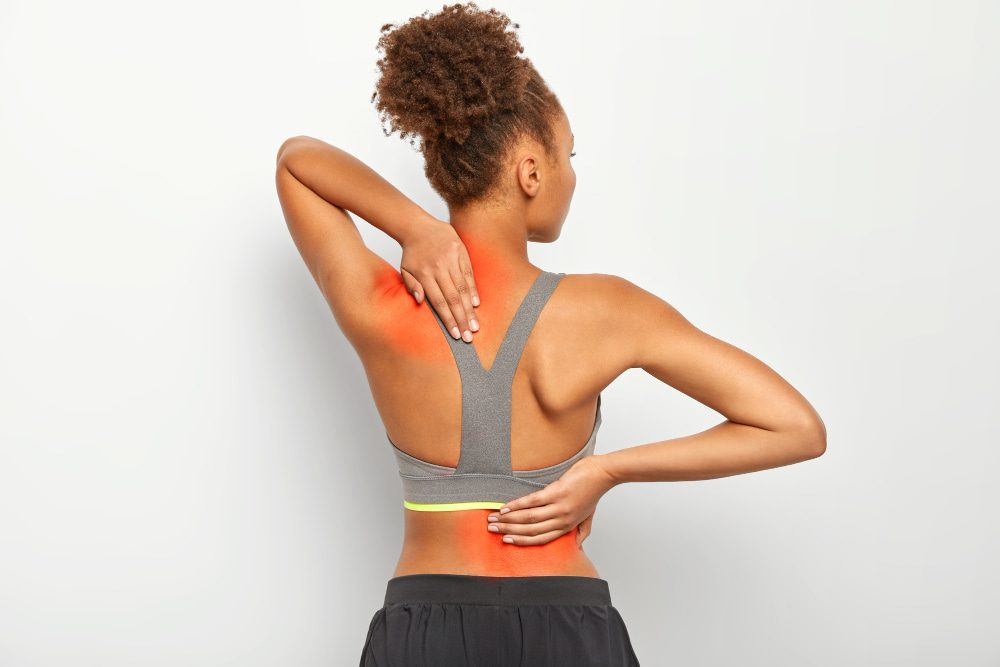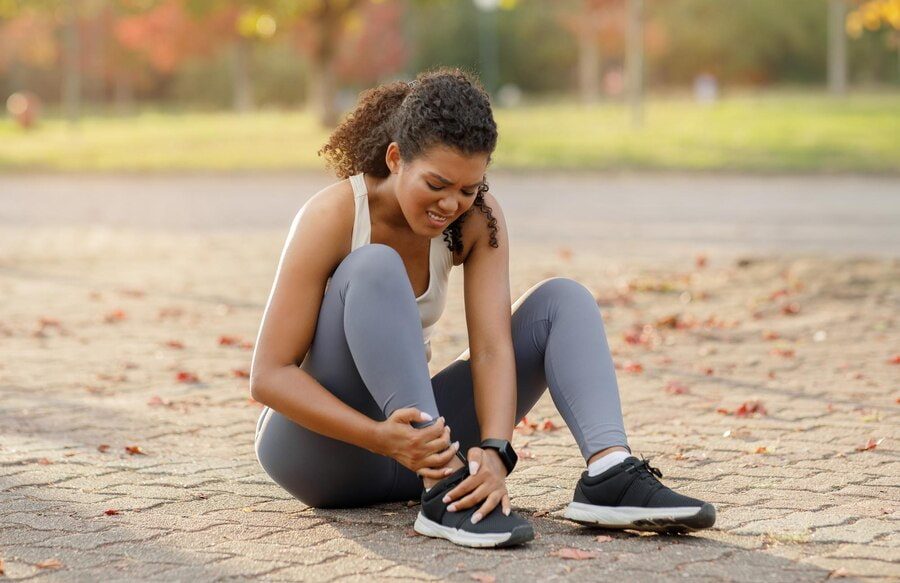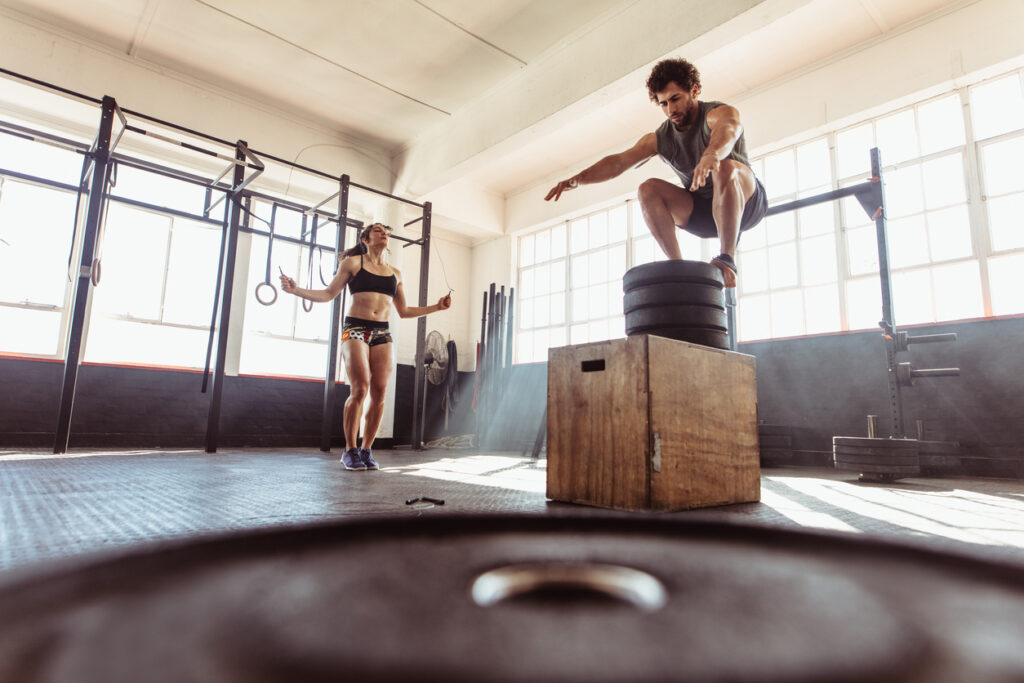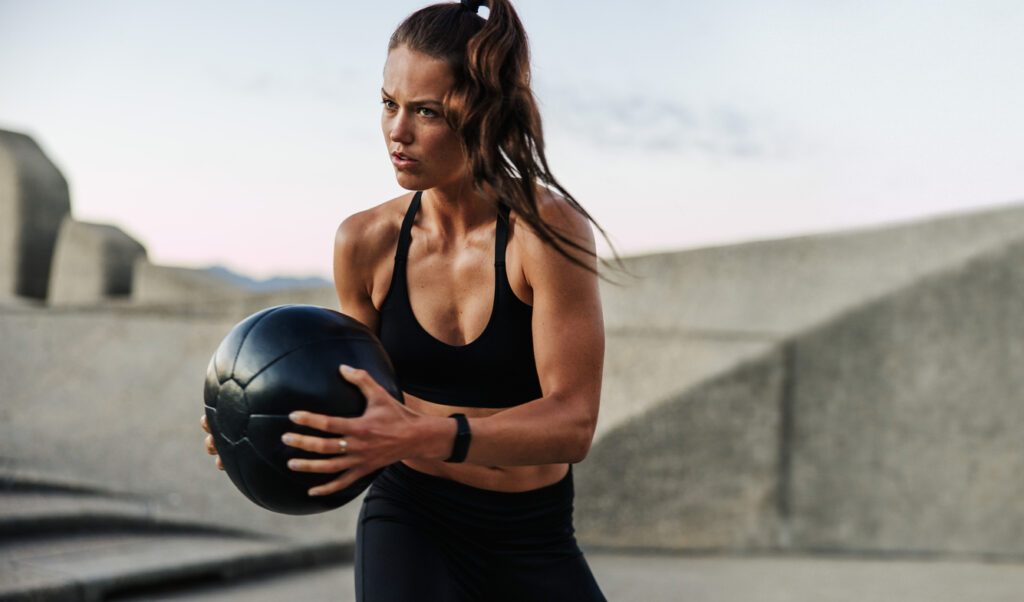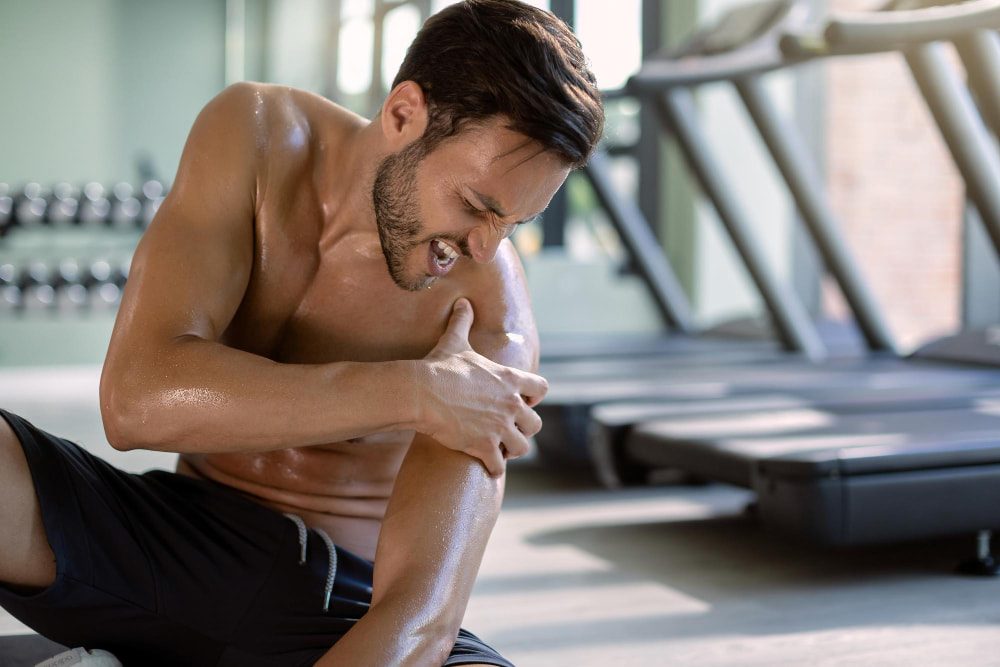
Summary
Welcome / Welcome / Tips for getting started / How to avoid cramps during a HIIT session?
How to avoid cramps during a HIIT session?
Muscle cramps can ruin your HIIT sessions or cross trainingThis can reduce your performance and motivation. Understanding why they occur and how to prevent them is crucial to optimising your training. This article guides you through practical advice on warming up, hydration, nutrition and cramp management.
Introduction
Discover exercises and techniques to avoid cramps and maximize your HIIT results. Are you ready to transform your sessions and say goodbye to cramps? Read this article, it’s for you.
Muscle cramps can turn a normally intense and beneficial HIIT session into a real nightmare. These sudden, painful contractions often affect muscles that are used repeatedly and intensively, as is the case during HIIT training. Just imagine: you're in the middle of a workout, your muscles are working at full capacity, and all of a sudden a cramp pops up, forcing you to stop dead in your tracks. Frustrating, isn't it?
Preventing cramp is essential for maintaining optimum performance during your HIIT sessions. Not only does it allow you to get the most out of your training, it also helps to reduce the risk of injury. Good preparation and proper habits can make all the difference between a smooth session and an experience interrupted by pain. So how can you avoid those annoying cramps and get the most out of your high-intensity workouts? That's what we're going to find out together.
Understanding muscle cramps
A muscle cramp is an involuntary, painful contraction of a muscle or group of muscles. Unlike a simple tension, a cramp causes acute pain that can last from a few seconds to several minutes. Symptoms include a sensation of hard, knotted muscle, often accompanied by intense pain and difficulty moving the affected area. Cramps can occur without warning, which makes them particularly frustrating during training.
Why do cramps occur during HIIT?
HIIT (High-Intensity Interval Training) sessions are renowned for their intensity and speed. These exercises place heavy demands on the muscles, alternating periods of intense effort with short recovery periods. This intensity can deplete muscle energy reserves, cause lactic acid build-up and imbalance electrolytes, all of which contribute to the onset of cramps. In addition, lack of adequate warm-up or insufficient hydration can also increase the risk of cramps during HIIT.
Preparation before the HIIT session
Warming up is a crucial stage before any HIIT session. It gradually raises the body temperature and prepares the muscles for the intense effort ahead. A good warm-up improves blood circulation, which helps to prevent cramps by supplying the muscles with the oxygen and nutrients they need. Some examples of effective warm-up exercises for HIIT include skipping, lunges and arm rotations. These dynamic movements activate the main muscle groups used during training.
Adequate hydration
Hydration plays a key role in preventing muscle cramps. Dehydration can unbalance electrolyte levels in the body, increasing the risk of cramps. It is essential to drink water throughout the day, not just before or during exercise. For optimum hydration before a HIIT session, consume around 500 ml of water two hours before training and continue to sip it during exercise. Electrolyte drinks can also be beneficial, especially in hot weather or for particularly intense sessions.
Nutrition and mineral intake
A balanced diet rich in essential minerals like potassium, magnesium and calcium can help prevent muscle cramps. These minerals play a crucial role in muscle and nerve function. For example, bananas are an excellent source of potassium, while almonds provide magnesium and dark chocolate is rich in beneficial antioxidants. Incorporate these foods into your daily diet to maintain your mineral levels and reduce the risk of cramps during your HIIT sessions.
Exercises to Avoid Cramps During HIIT
Dynamic stretching is essential to prepare your muscles before a HIIT session. Unlike static stretching, dynamic stretching involves active movements that increase flexibility and improve blood circulation. Some examples of effective dynamic stretches include forward lunges, arm rotations and leg swings. These movements help to warm up muscles and improve their range of movement, which can prevent cramps by reducing muscle tension.
Muscle strengthening exercises
Muscle strengthening plays a crucial role in preventing cramps during HIIT. Well-conditioned muscles are less likely to fatigue quickly and develop cramps. Focus on strengthening the muscles used most during HIIT, such as the quads, hamstrings, calves, and core. Exercises like squats, lunges, calf raises, and planks can increase muscle strength and endurance, helping prevent cramps.
Breathing techniques
Correct breathing is often overlooked, but it is essential for preventing muscle cramps. During a HIIT session, inefficient breathing can lead to a build-up of carbon dioxide and a reduction in muscle oxygenation, increasing the risk of cramps. Learn to synchronise your breathing with your movements. For example, inhale deeply during less intense movements and exhale sharply during phases of effort. This technique improves breathing efficiency and reduces muscle tension, helping to prevent cramp.
Managing cramps during the session
When a cramp occurs in the middle of a HIIT session, the first thing to do is stop the exercise immediately. Continuing to train despite the pain can aggravate the cramp and lead to more serious injury. Take a few moments to relax the affected muscle and breathe deeply. Gently massaging the cramped area can help to relax the muscle and relieve pain. Don't hesitate to stretch gently to promote blood circulation in the area concerned.
Resuming exercise gently
After a cramp, it's crucial to resume exercise gradually. Don't go straight back to the maximum intensity of your HIIT session. Start with lighter, less intense movements to allow your muscles to readapt to the effort. For example, walk on the spot or do low-impact movements before resuming more vigorous exercise. This gradual resumption helps prevent cramps from returning and reduces the risk of injury.
Recovery after the HIIT session
After a HIIT session, static stretching is essential to help your muscles recover and prevent future cramps. Unlike dynamic stretching, static stretching involves holding a position for an extended period to increase flexibility and reduce muscle tension. Some examples of effective stretches include the calf stretch, where you stand against a wall with your heel on the floor, and the quadriceps stretch, where you grab your ankle behind you as you bend your knee. Hold each stretch for at least 30 seconds to maximise the benefits.
Muscle relaxation techniques
Muscle relaxation techniques, such as the use of massage rollers and massage balls, can greatly aid post-session recovery. Massage rollers help to relax tense muscles and stimulate blood circulation, making it easier to eliminate toxins and improve circulation. reduction of aches. To use a massage roller, place it under the affected muscle and roll slowly to massage the area. Massage balls are ideal for targeting trigger points and hard-to-reach areas, providing deep, targeted muscle relaxation.
Post-session nutrition
Nutrition after a HIIT session plays a key role in muscle recovery and cramp prevention. Eating foods rich in protein and carbohydrates helps to repair muscle fibres and replenish glycogen stores. For example, a smoothie made with banana and protein powder, almonds or Greek yoghurt with fruit are excellent options. In addition, drinking plenty of water or electrolyte drinks after exercise helps to rehydrate the body and rebalance electrolyte levels, reducing the risk of future cramps.
Conclusion
Preventing muscle cramps during HIIT is essential to optimize your performance. By warming up properly, staying well hydrated and eating a diet rich in minerals, you significantly reduce the risk of cramps.
Apply dynamic stretching before training and relaxation techniques afterwards. Good cramp management during the session will allow you to resume exercise smoothly and avoid injury.
Play sports without injuries with DRIP
Do you want to boost your training? Join DRIP! Our varied equipment will put you at ease and push you to surpass yourself.
At DRIP, it's simple: 7 different exercises, 3 rounds, 1 minute per exercise. Continue without a break to burn as many calories as possible! Our coaches, dynamic playlists and immersive lights will motivate you like never before.
Whatever your level, you are welcome at DRIP!
Ready to sweat? Join us in our Parisian studios in Monceau or Grands Boulevards. You will love to hate us! ❤️🔥
Share
Tagged
Read also
follow us
on instagram
To follow all our news,
take advantage of our tutorials and participate
in our many competitions.
BREAKING NEWS!
Receive our newsletter.
